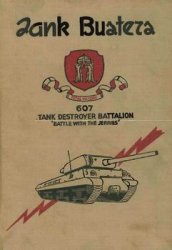In 1866, returning from his honeymoon in Europe, thirty-year-old Charles Francis Adams Jr., (great-grandson of John Adams and grandson of John Quincy Adams), full of ambition and ready, as he put it, to confront the world “face to face,” looked about in search of a career. “Surveying the whole field,” he

The Union Railroad Station in Montgomery, Alabama, was designed by Henry Hobson Richardson, the nation's foremost architect in the late nineteenth century. Richardson borrowed ideas from the past, including arches that evoked ancient Rome. The building's massiveness and horizontal lines suggested the power and reach of the railroads: the American empire as built on steel rails.
Later explained, “I fixed on the railroad system as the most developing force and the largest field of the day, and determined to attach myself to it.” Adams’s judgment was acute: For the next twenty-five years the railroads were probably the most significant element in American economic development, railroad executives the most powerful people in the country.
Railroads were important first as an industry in themselves. Fewer than 35,000 miles of track existed when Lee laid down his sword at Appomattox. In 1875 railroad mileage exceeded 74,000 and the skeleton of the network was complete. Over the next two decades the skeleton was fleshed out. In 1890 the mature but still-growing system took in over $1 billion in passenger and freight revenues. (The federal government’s income in 1890 was only $403 million.) The value of railroad properties and equipment was more than $8.7 billion. The national railroad debt of $5.1 billion was almost five times the national debt of $1.1 billion! By 1900 the nation had 193,000 miles of track.
The emphasis in railroad construction after 1865 was on organizing integrated systems. The lines had high fixed costs: taxes, interest on their bonds, maintenance of track and rolling stock, and salaries of office personnel. A short train with half-empty cars required almost as many workers and as much fuel to operate as a long one jammed with freight or passengers. To earn profits the railroads had to carry as much traffic as possible. They therefore spread out feeder lines to draw business to their main lines the way the root network of a tree draws water into its trunk.
Before the Civil War, passengers and freight could travel by rail from beyond Chicago and St. Louis to the Atlantic coast, but only after the war did true interregional trunk lines appear. In 1861, for example, the New York Central ran from Albany to Buffalo. One could proceed from Buffalo to Chicago, but on a different company’s trains. In 1867 the New York Central passed into the hands of “Commodore” Cornelius Vanderbilt, who had made a large fortune in the shipping business. Vanderbilt already controlled lines running from Albany to New York City; now he merged these properties with the New York Central. In 1873 he integrated the Lake Shore and Michigan Southern into his empire and two years later the Michigan Central. At his death in 1877 the New York Central operated a network of over 4,500 miles of track between New York City and most of the principal cities of the Midwest.
While Vanderbilt was putting together the New York Central complex, Thomas A. Scott was fusing roads to Cincinnati, Indianapolis, St. Louis, and Chicago to his Pennsylvania Railroad, which linked
Pittsburgh and Philadelphia. In 1871 the Pennsylvania line obtained access to New York; soon it reached Baltimore and Washington. By 1869 another important system, the Erie, extended from New York to Cleveland, Cincinnati, and St. Louis. Soon thereafter it too tapped the markets of Chicago and other cities. In 1874 the Baltimore and Ohio rail line also obtained access to Chicago.
The transcontinentals were trunk lines from the start; the emptiness of the western country would have made short lines unprofitable, and builders quickly grasped the need for direct connections to eastern markets and thorough integration of feeder lines.
The dominant system builder of the Southwest was Jay Gould, a soft-spoken, unostentatious-looking man who was in fact ruthless, cynical, and aggressive. Another railroad president once called Gould a “perfect eel.” Gould took over the Kansas Pacific, running from Denver to Kansas City, and consolidated it with the Union Pacific and the Missouri Pacific, a line from Kansas City to St. Louis. Often he put together such properties merely to unload them on other railroads at a profit, but his grasp of the importance of integration was sound.
In the Northwest, Henry Villard, a German-born former newspaperman, constructed another great complex based on his control of the Northern Pacific. James J. Hill controlled the Great Northern system, still another western network.
The Civil War had highlighted the need for thorough railroad connections in the South. Shortly after the conflict the Chesapeake and Ohio opened a direct line from Norfolk, Virginia, to Cincinnati, Ohio. By the late 1880s, the Richmond and West Point Terminal Company controlled an 8,558-mile network. Like other southern trunk lines such as the Louisville and Nashville and the Atlantic Coast Line, this system was controlled by northern capitalists.
The trunk lines interconnected and thus had to standardize many of their activities. This in turn led to the standardization of other aspects of life. The present system of time zones was developed in 1883 by the railroads. The standard track gauge (four feet eight and one-half inches) was established in 1886. Standardized car coupling and braking mechanisms, standard signal systems, even standard methods of accounting were essential to the effective functioning of the network.
The lines sought to work out fixed rates for carrying different types of freight, charge more for valuable manufactured goods than for bulky products like coal or wheat, and they agreed to permit rate concessions to shippers when necessary to avoid hauling empty cars. In other words, they charged what the traffic would bear. However, by the 1880s the men who ran the railroads had come to recognize the advantages of cooperating with one another to avoid “senseless” competition. Railroad management was becoming a kind of profession, with certain standard ways of doing things, its own professional journals, and with regional organizations such as the Eastern Trunk Line Association and the Western Traffic Association.
Because of their voracious appetite for traffic, railroads in sparsely settled regions and in areas with undeveloped resources devoted much money and effort to stimulating local economic growth. The Louisville and Nashville railroad, for instance, was a prime mover in the expansion of the iron industry in Alabama in the 1880s.
To speed the settlement of new regions, the land-grant railroads sold land cheaply and on easy terms, for sales meant future business as well as current income. They offered reduced rates to travelers interested in buying farms and set up “bureaus of immigration” that distributed brochures describing the wonders of the new country. Their agents greeted immigrants at the eastern ports and tried to steer them to railroad property. They sent agents who were usually themselves immigrants—often ministers—all over Europe to recruit prospective settlers.
Technological advances in railroading accelerated economic development in complex ways. In 1869 George Westinghouse invented the air brake. By enabling an engineer to apply the brakes to all cars simultaneously (formerly each car had to be braked separately by its own conductor or brakeman), this invention made possible revolutionary increases in the size of trains and the speed at which they could safely operate. The sleeping car, invented in 1864 by George Pullman, now came into its own.
To pull the heavier trains, more powerful locomotives were needed. They in turn produced a call for stronger and more durable rails to bear the additional weight. Steel, itself reduced in cost because of technological developments, supplied the answer, for steel rails outlasted iron by many years despite the use of much heavier equipment.
A close tie developed between the railroads and the nation’s telegraph network, dominated by the Western Union Company. Commonly the railroads allowed Western Union to string wires along their rights-of-way, and they transported telegraphers and their equipment without charge. In return they received free telegraphic service, important for efficiency and safety.
C‘J>lSee the Map Railroads & New Transportation Systems at Www. myhistorylab. com
Iew the Image J. P. Morgan at Www. myhistorylab. com

Electric companies advertised the advantages of electric lights at regional exhibitions, such as these electrified renderings at the 1897 Tennessee Centennial Exposition. The lights evoke the Parthenon of ancient Athens and the pyramids of Egypt.




 World History
World History









